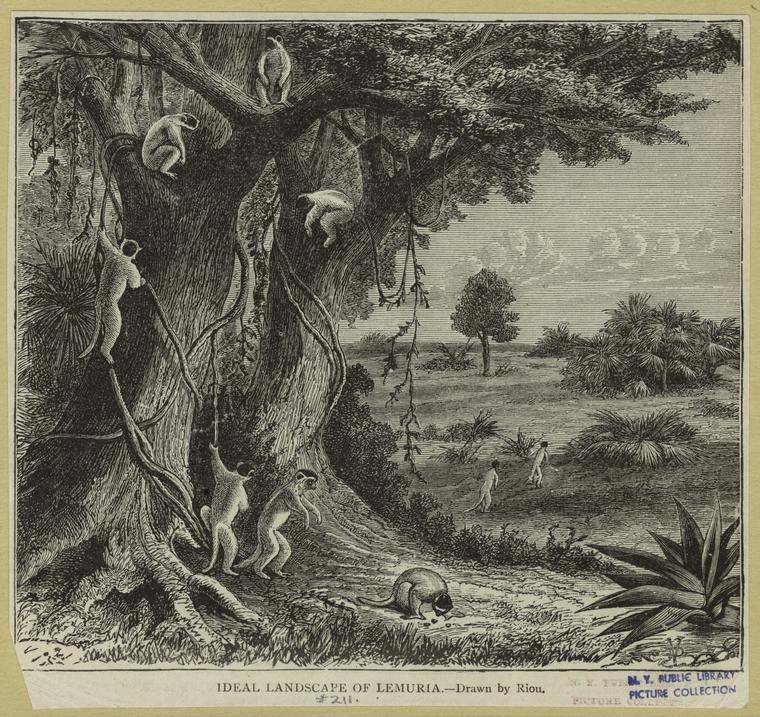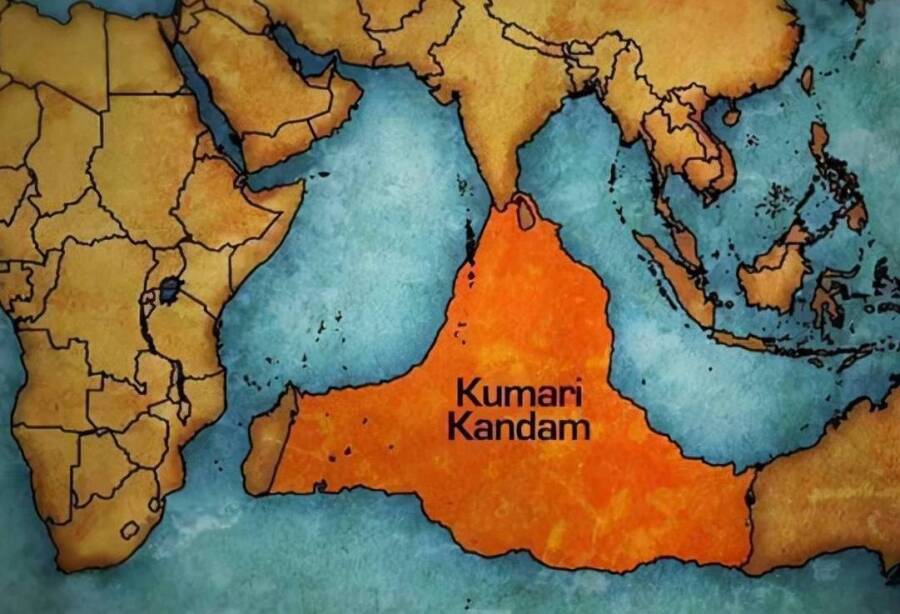For decades, scientists offered theories about the fabled sunken continent of Lemuria in the Indian Ocean. But in 2013, researchers finally found evidence that it may have actually existed.

Edouard Riou/New York Public LibraryA hypothetical rendering of Lemuria from 1893.
In the mid-1800s, a few scientists working from scant evidence theorized that there was once a lost continent in the Indian Ocean and they called it Lemuria.
On this lost continent, some even thought, there once lived a race of now-extinct humans called Lemurians who had four arms and enormous, hermaphroditic bodies but nevertheless are the ancestors of modern-day humans and perhaps also lemurs.
And as outlandish as this all may sound, the idea flourished for a time both in popular culture and some corners of the scientific community. Of course, modern science has long since debunked the idea of Lemuria altogether.
But then, in 2013, geologists discovered evidence of a lost continent precisely where Lemuria was said to have existed and the old theories started cropping up once again.
How And Why The Lost Continent Of Lemuria Was First Proposed

Wikimedia CommonsPhilip Lutley Sclater (left) and Ernst Haeckel.
Lemuria theories first became popular in 1864, when British lawyer and zoologist Philip Lutley Sclater wrote a paper titled “The Mammals of Madagascar” and had it published in the The Quarterly Journal of Science. Sclater observed that there were many more species of lemur in Madagascar than there were in either Africa or India, thus claiming that Madagascar was the animal’s original homeland.
Moreover, he proposed that what had allowed lemurs to first migrate to India and Africa from Madagascar long ago was a now-lost landmass stretching across the southern Indian Ocean in a triangular shape. This continent of “Lemuria,” Sclater suggested, touched India’s southern point, southern Africa, and western Australia and eventually sunk to the ocean floor.
This theory came at a time when the science of evolution was in its infancy, notions of continental drift weren’t widely accepted, and many prominent scientists were using land bridge theories to explain how various animals once migrated from one place to another (a theory similar to Sclater’s had even been proposed by French naturalist Étienne Geoffroy Saint-Hilaire two decades earlier). Thus, Sclater’s theory gained some traction.
Theories About Lemuria Grow More Complex And Bizarre
Soon, other noted scientists and authors took the Lemuria theory and ran with it. Later in the 1860s, German biologist Ernst Haeckel began publishing work claiming that Lemuria was what allowed humans to first migrate out of Asia (believed by some at the time to be the birthplace of humanity) and into Africa.
Haeckel even suggested that Lemuria (a.k.a. “Paradise”) may have been the very cradle of humankind itself. As he wrote in 1870:
“The probable primeval home or ‘Paradise’ is here assumed to be Lemuria, a tropical continent at present lying below the level of the Indian Ocean, the former existence of which in the tertiary period seems very probable from numerous facts in animal and vegetable geography.”

Library of CongressA hypothetical map (believed to originate with Ernst Haeckel) depicting Lemuria as the cradle of humankind, with arrows indicating the theorized spread of various human subgroups outward from the lost continent. Circa 1876.
With help from Haeckel, Lemuria theories persisted throughout the 1800s and into the early 1900s (often discussed alongside the myth of Kumari Kandam, a proposed lost continent in the Indian Ocean that once housed a Tamil civilization). This was before modern science discovered ancient human remains in Africa that suggested that continent was actually the cradle of humankind. This was also before modern seismologists understood how plate tectonics moved the once-connected continents away from each other into their present forms.
Without such knowledge, many continued to embrace the notion of Lemuria, especially after Russian occultist, medium, and author Elena Blavatskaja published The Secret Doctrine in 1888. This book proposed the idea that there were once seven ancient races of humanity and that Lemuria had been the home of one of them. This 15-foot-tall, four-armed, hermaphroditic race flourished alongside the dinosaurs, Blavatskaja said. Fringe theories even suggested that these Lemurians evolved into the lemurs we have today.
Afterward, Lemuria understandably found its way into novels, movies, and comic books well into the 1940s. Many people saw these works of fiction and wondered where authors and filmmakers got these fanciful ideas. Well, they got their ideas from scientists and writers about 75 years before.
Was Lemuria Real? Scientists Uncover Surprising Evidence

Sofitel So Mauritius/FlickrIn 2013, researchers discovered some interesting evidence near the nation of Mauritius.
Fast forward to 2013. Any scientific theories of a lost continent and land bridge responsible for the migration of lemurs is gone. However, geologists have now discovered traces of a lost continent in the Indian Ocean.
Scientists found fragments of granite in the ocean south of India along a shelf that extends hundreds of miles south of the country towards Mauritius.
On Mauritius, geologists found zircon despite the fact that the island only came into being 2 million years ago when, thanks to plate tectonics and volcanoes, it slowly rose out of the Indian Ocean as a small landmass. However, the zircon they found there dated to 3 billion years ago, eons before the island had even formed.
What this meant, scientists theorized, was that the zircon had come from a much older landmass that long ago sunk into the Indian Ocean. Sclater’s story about Lemuria was true — almost. Rather than call this discovery Lemuria, geologists named the proposed lost continent Mauritia.

Wikimedia CommonsMap indicating the supposed location of Lemuria, referred to here by its Tamil name, “Kumari Kandam.”
Based on plate tectonics and geological data, Mauritia disappeared into the Indian Ocean around 84 million years ago, when this region of Earth was still turning into the shape it holds today.
And while this generally lines up with what Sclater had once claimed, the new evidence puts the notion of an ancient race of Lemurians that evolved into lemurs to rest. Mauritia disappeared 84 million years ago, but lemurs didn’t evolve on Madagascar until about 54 million years ago when they swam to the island from mainland Africa (which was closer to Madagascar than it is now).
Nevertheless, Sclater and some of the other scientists of the mid-1800s were partially right about Lemuria despite their limited knowledge. A lost continent didn’t suddenly sink into the Indian Ocean and vanish without a trace. But, long ago, there was something there, something that is now gone forever.
After this look at the “lost continent” of Lemuria, uncover the mysteries of the legendary lost cities and sunken cities of the ancient world. Then, read up on the fear of the sea known as thalassophobia.





